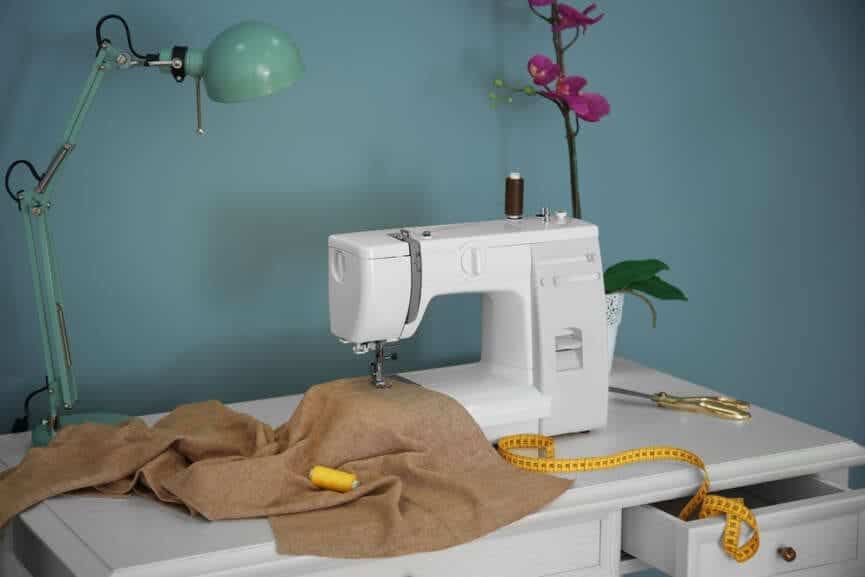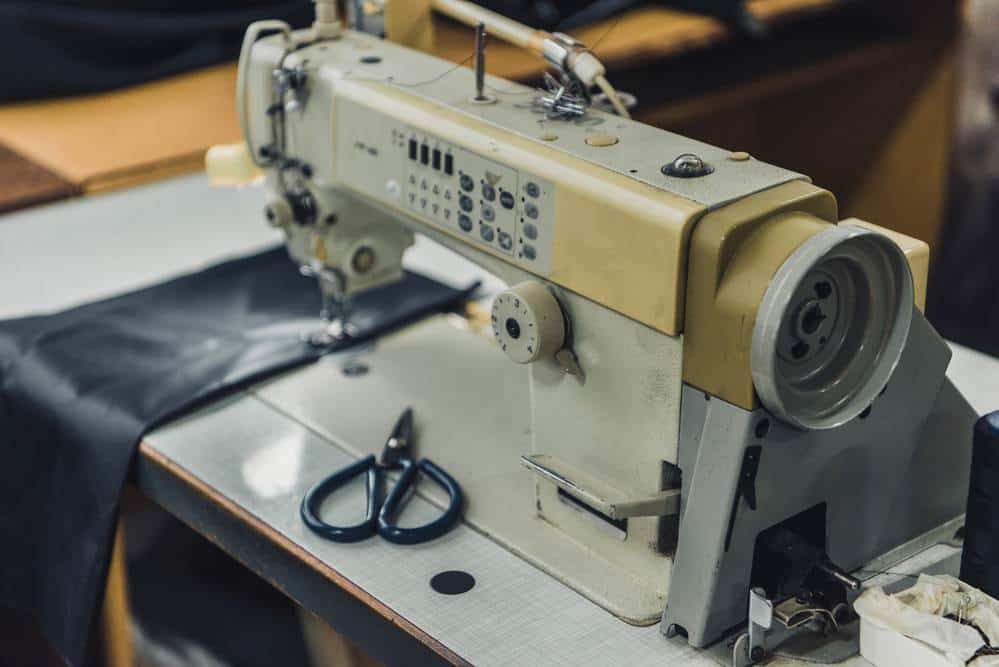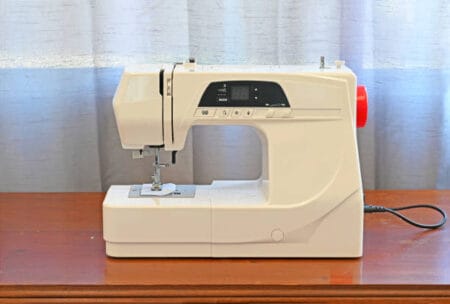Sewing machines are marvelous tools that help you unleash your creativity and precision in the world of fabric crafts and ideas to life.
However, like any other machine, they can sometimes encounter issues that leave you scratching your head.
We’ll go over some of likely causes of your sewing machine’s indifference and then present you some adjustments to get it going again.

Source: Depositphotos
1. Power Supply Problems
If you are pressing the power button, again and again, but nothing is happening then you need to begin by checking your power supply.
If your sewing machine seems to be working properly, you wanna try plugging it into a different outlet just to make sure the problem isn’t with the outlet, you were using.
If you suspect it is then just use the same electrical outlet that you’re using for your sewing machine to plug in another device, like a lamp. This quick test will determine whether or not the outlet itself is functioning properly.
In case your outlet appears to be dead, check your home’s circuit breaker for that particular room. Sometimes, a tripped fuse box can be the culprit in cases like these.
Then you just need to reset the breaker for the outlet and try again.
2. Damaged Cord
If your power supply has been ruled out as a cause, but your sewing machine is still not working then you wanna double check the cord.
As It connects your machine to the power source It can be defective in this instance.
It is imperative that you change the cord as soon as you notice any of these issues in order to prevent any hazards or damage in your space.

3. Overheating and Safety Features
If your sewing machine is working fine but still now it’s not working then, it might be because your machine has overheated. If your machine has overheated then it might automatically shut down to prevent damage.
If your sewing machine has overheated then you need to unplug it to cool down. Leave it for 1 or so before using it again.
New advanced machines often come with built-in safety mechanisms that cause it to shut down the machine when it detects any symptom of overheating. These safety mechanisms are created for your safety, it will protect both you and your machine.
You need to avoid overloading your circuits by using too many devices at the same time on the same circuit. So, you must make sure that your machine is plugged into an outlet with enough wattage to prevent overheating.
4. On/Off Switch Problems
If your power cord is in good condition, and the outlet is working correctly, but still the machine remains unresponsive when you have pressed the power button. Here is the solution for it:
First of all, make your sewing machine unplugged, after that you need to check the On/Off switch for continuity using a multimeter. In the ‘on’ position, the multimeter should measure near 0 ohms of resistance through the switch.
If it registers infinite resistance, the switch may be faulty and prevent power from reaching the machine. In this case, replace the On/Off switch to restore functionality.

Source: Depositphotos
5. Seek Professional Help
If you’ve tried all methods mentioned above but your sewing machine is still not turning on then you need to take your sewing machine to a professional. There might be an underlying issue that requires the expertise of a professional technician.
If none of the above mentioned solutions are yielding results then it’s time for you to seek professional technican help. Internal electrical or mechanical problems need specialized attention.

Closing Thoughts
In conclusion, dealing with bobbin thread issues can sometimes be a issue, but by ensuring the correct bobbin winding mode and proper threading of the bobbin case, you can prevent thread bunching and get overall smoother stitching.
So, when it comes to sewing machine thread and tension settings, paying attention to aspects such as stitch length as it’s essential to always use the correct sewing machine needle for your specific sewing project.
Particularly, if you are working with vintage sewing machines like the renowned Singer sewing machine.
Your choice of presser foot and how you control the foot pedal can also make a difference in your sewing experience.








5 Comments
Powering down the sewing machine mystery! This article unravels the common glitches behind a silent sewing machine. From electrical hiccups to troubleshooting tips, it’s a must-read for every stitch enthusiast facing the ‘off’ dilemma. Get those machines humming again!
I found this article on the reasons why your sewing machine may not turn on truly insightful. It beautifully emphasizes the significance of these marvelous tools in unleashing creativity. The explanations of possible issues and adjustments provided were both helpful and practical, making it a valuable resource for anyone facing sewing machine challenges.
My sewing machine has been giving me trouble lately, and this article came to the rescue. It efficiently highlighted six key reasons why a sewing machine may not turn on, ranging from power supply issues to damaged cords and overheating. The emphasis on seeking professional help when needed is a valuable tip for anyone facing technical challenges. Furthermore, it delves into the importance of addressing bobbin thread issues, emphasizing correct bobbin winding and threading for smoother stitching. A comprehensive guide indeed!
The next time my sewing machine refuses to turn on, I will definitely not panic. It turns out there could be minor reasons behind that. So, I will try and fix the issues instead so that I can start using the machine again. Thanks to this article, I know how to fix the issue.
I didn’t knew that there were so many reasons why the sewing machine won’t turn on. I never had idea about it. Thanks for the article it will be very helpful for me in the future if i encountered with the problem. And i’m happy that i got the knowledge beforehand.